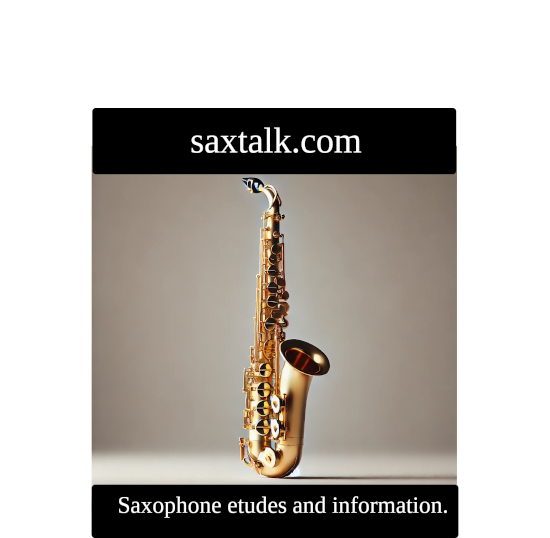A 10 part regimen for a saxophonist to improve his or her sight-reading ability
Melissa's goal is to become a world-class saxophonist. She wants to become a studio musician. She knows that to achieve her dream, she must become a world-class sight-reader. Please develop a 10 part regimen for Melissa that will make her a world-class sight-reader.
10-Part Regimen for Melissa's World-Class Sight-Reading:
Warm-Up (5-10 minutes):
- Solfege & Rhythmic Exercises: Start each practice session with solfege and rhythmic exercises. Sing melodic patterns and clap complex rhythms while internalizing intervals and rhythmic nuances. This builds ear-to-hand coordination and internal rhythm.
- Long Tones & Finger Patterns: Warm up your lungs and fingers with long tones and chromatic finger patterns. This improves airflow, dexterity, and muscle memory.
Focus (20-30 minutes each):
- Slow Sight-Reading with Metronome: Choose simple melodies and gradually increase the tempo on a metronome. Focus on accuracy over speed. Analyze key signatures, accidentals, and rhythmic patterns before playing. Repeat passages with errors until mastered.
- Intervallic Reading: Practice identifying and playing intervals (fifths, thirds, octaves etc.) on the saxophone without relying on scale patterns. This builds intervallic independence and fluency.
- Rhythmic Sight-Reading: Focus on complex rhythms, syncopation, and odd time signatures. Use dedicated rhythmic studies or simplified transcriptions of challenging grooves. Develop a solid internal pulse and rhythmic anticipation.
- Melodic & Harmonic Dictation: Transcribe short melodic and harmonic phrases by ear. This trains your ear to recognize intervals, chords, and progressions, improving sight-reading comprehension.
Challenge & Expand (15-20 minutes each):
- Transposition Practice: Transpose melodies and scales in different keys. This strengthens key signature understanding and flexibility in playing across ranges.
- Sight-Reading Unfamiliar Genres: Challenge yourself with unfamiliar musical styles like jazz improvisation, contemporary classical, or world music. This broadens your musical vocabulary and sight-reading adaptability.
- Play with Backing Tracks: Sight-read melodies or improvise over pre-recorded backing tracks in various styles. This develops musicality, timing, and the ability to react to unforeseen musical situations.
Maintenance & Reflection (10-15 minutes):
- Review & Analyze Errors: Reflect on your practice, identify recurring mistakes in sight-reading, and create targeted exercises to address them. This proactive approach accelerates improvement.
Bonus Tips:
- Record yourself sight-reading and listen back critically.
- Join a sight-reading group or ensemble for peer support and motivation.
- Attend workshops or masterclasses focused on sight-reading techniques.
- Most importantly, be patient, consistent, and celebrate your progress!
Remember, world-class sight-reading takes dedication and sustained effort. By incorporating these techniques into your daily practice, Melissa can develop the fluency and confidence to navigate any musical score with ease. Good luck, Melissa!
